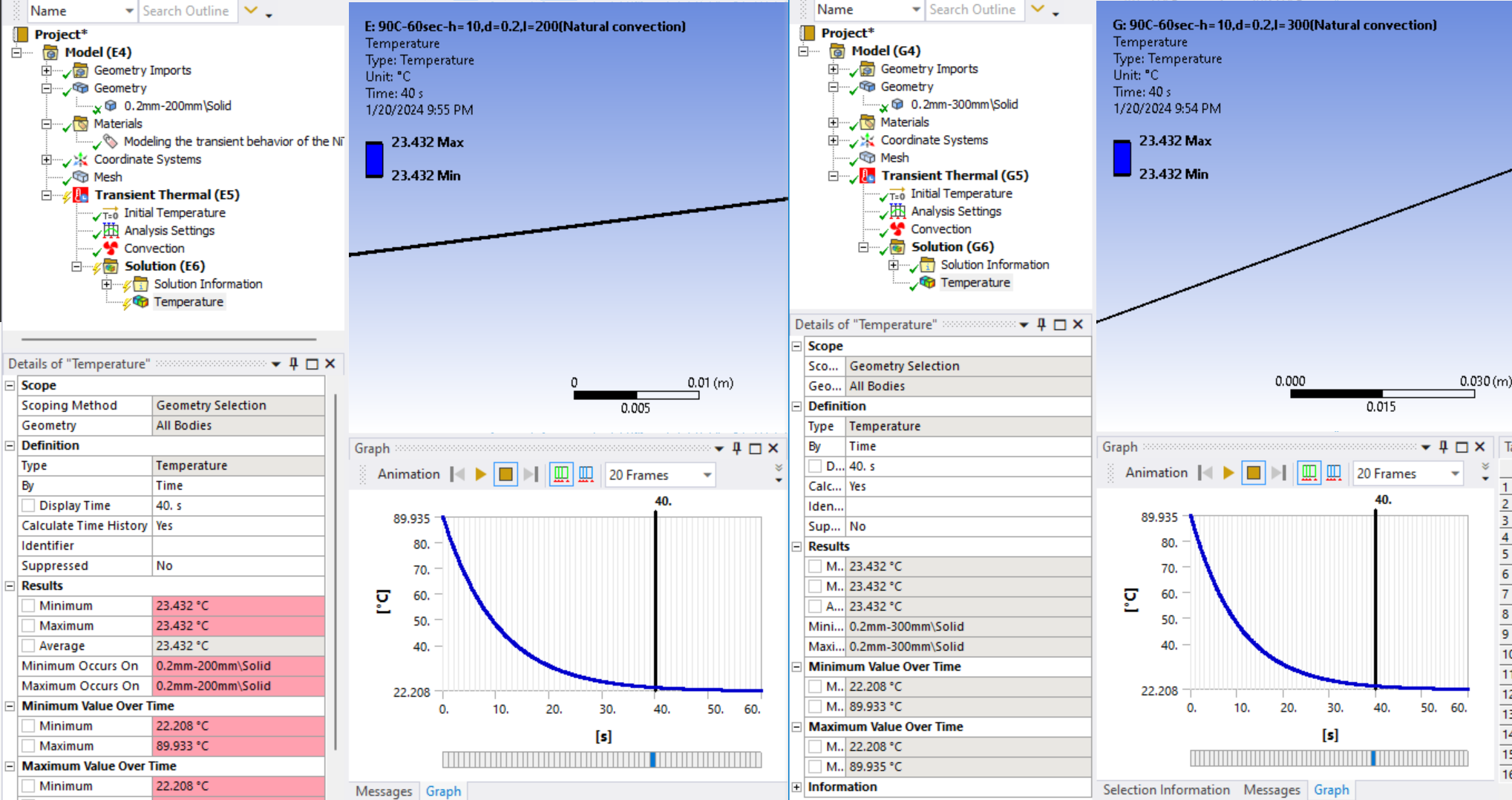-
-
January 20, 2024 at 2:01 pm
QUSAI HAMID
Subscriber Hi I used transient thermal analysis on an Ansys workbench to study the effect of the length of wire on temperature after cooling from 90 °C to 22 °C. I applied heat convection at 10 W/m^2 K, and all properties and boundary conditions are the same except the length of the wire. I got the same result in the temperature profile for all different lengths of wire. why?
Hi I used transient thermal analysis on an Ansys workbench to study the effect of the length of wire on temperature after cooling from 90 °C to 22 °C. I applied heat convection at 10 W/m^2 K, and all properties and boundary conditions are the same except the length of the wire. I got the same result in the temperature profile for all different lengths of wire. why?Thanks in advance for any support or help.
Best regards.
-
January 20, 2024 at 3:52 pm
peteroznewman
SubscriberTransient Thermal only solves for Temperature. The nodes don't move, the length is not going to change. You solved to find out the temperature profile in space and time. For this simple geometry, the temperature profile along the length of the wire will be uniform except perhaps for a short segment at each end.
For a uniform temperature and a constant CTE, do a hand calculation to find out the change in length of the wire.
ΔL = ΔT*CTE*L
where ΔT = 22 - 90 = -68 then the length at 22 °C is L + ΔL
To simulate that, use a Static Structural analysis, use a Fixed Support at one end of the wire, set the Environment Temperature to 90 °C and add a Thermal Condition on the body of 22 °C.
For more complex geometry where the temperature is not uniform over the shape of the body, you would link the solution of the Transient Thermal into the Setup cell of the Static Structural to set the temperature of each node instead of assigning it a constant value.
-
January 20, 2024 at 4:15 pm
QUSAI HAMID
SubscriberThanks for your response.I knew that transient thermal only solves for temperature. The nodes don't move, and the length will not change. BUT I need to study the temperature distribution during cooling from high to low temperatures and evaluate the time for this process for different lengths of wire.I mean, I had wires with multiple lengths, for example, 100, 200, and 500 mm, and then I applied constant heat convection (h). The initial temperature is 90 °C, and the ambient temperature is 22 °C. It is supposed to get different cooling times for different lengths of wires, so I get the same results.Many Thanks. -
January 20, 2024 at 5:09 pm
peteroznewman
SubscriberAh sorry, I misread your problem statement.
The convective cooling equation is
Q = h*A*ΔT
The reason different lengths of wire give the same temperature profile is that this 3D model is basically a 2D problem. For any length of wire, there is an amount of heat Q and a surface area A. If you double the length of wire, the area will be 2A and the heat will be 2Q so the 2's cancel on each side of the equation and there is no difference in the profile for any wire length.
-
January 20, 2024 at 11:09 pm
QUSAI HAMID
SubscriberAh, thanks for your time.So, how can I get the effect of the length on Q (temperature)?Is there any other method?Any suggestion?I appreciate your support. thanks. -
January 21, 2024 at 3:37 am
peteroznewman
SubscriberYou have found the effect of length on the temperature profile. Length has no effect.
I showed you the convective heat transfer equation that proves the same. Length has no effect.
Other kinds of boundary conditions or geometric shapes can have a length effect, but there is no effect for the boundary conditions you described for this wire.
-
January 21, 2024 at 2:37 pm
QUSAI HAMID
SubscriberThanks.
-
- The topic ‘Transient Thermal Analysis’ is closed to new replies.



-
4803
-
1582
-
1386
-
1242
-
1021

© 2026 Copyright ANSYS, Inc. All rights reserved.







